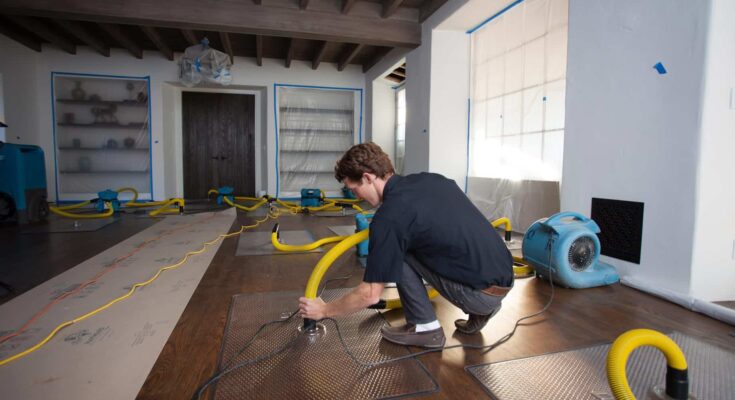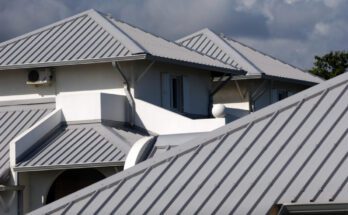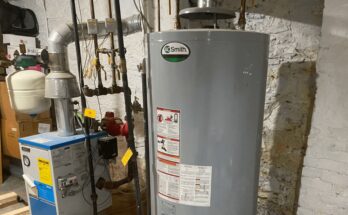Water damage may be the worst nightmare for a homeowner, resulting in costly repairs and health hazards. Although restoration of water damage is essential for recovery, prevention can be even more crucial. By taking proactive actions, homeowners can reduce their risk of experiencing water damage. They also avoid stress and expenses associated with this. This article gives valuable tips for preventing water damage in the future and provides insight into how to restoration for water damage if it occurs.
Water Damage: Causes And Effects
Water damage is caused by many things, including plumbing failures, natural disasters, and human errors. Common causes include
- Flooding resulting from heavy rain or storms
- A burst pipe or a leaking pipe
- Failures of appliances such as dishwashers or washing machines
- Roof leaking
- Clogged drains and gutters
- Sewage backups
When homeowners are aware of the potential dangers, they can take steps to protect themselves.
Tips For Preventing Water Damage
- Regular Maintenance
Plumbing and appliances need to be regularly maintained. Be sure to inspect pipes, water tanks, and appliances. If you find any signs of wear, address the issue immediately. It is important to replace damaged or worn hoses.
- Install Water Detection Devices
Water alarms or water detection devices can alert you to leaks in real-time. Place these water detection devices near possible sources of water damage. This applies to basements and beneath sinks next to water heaters. Some advanced systems even have the ability to shut off water supplies automatically, preventing extensive damage.
- Maintaining Your Roof And Gutters
A roof that is well-maintained will help prevent water damage. You should inspect your roof frequently for any missing or damaged shingles. If you find them, fix the problem immediately.
- Seal Windows And Doors
Sealing your windows and sliding doors correctly can help prevent water from entering the house during heavy rains. Check and reapply caulk around doors and windows, if necessary. Install weather stripping as an additional barrier against water penetration.
- Grade Your Yard
A slope away from your foundation is ideal. Grading correctly helps to direct water away from your home, reducing the likelihood of it pooling around the house’s foundation or seeping into the crawl space.
- Installing The Sump Pump
The sump pump will be an important investment for those homes that have basements and are prone to flooding. It can remove excess moisture and prevent flooding. Test your sump pumps regularly to check that they are working properly. Also, consider installing a backup battery system so you can keep them running even if the power goes out.
Water Damage Restoration: Some Insights
Even with the greatest of intentions, water damage may still happen. In order to minimise any damage, it is essential that you take action immediately. Here are some insights into the water damage restoration processes:
- Emergency Reaction
An immediate emergency response is essential to water damage restoration. Professional restoration firms are available 24 hours a day to assess water damage and provide solutions. A quick response can prevent additional damage and reduce the overall time of restoration.
- Water Extraction And Drying
In order to effectively dry out the affected area, it’s important to remove any standing water. Restoration professionals use modern equipment to speed up the drying-up process. This helps to prevent mold and structural damage.
- Assessment
In order to determine how much restoration work is required, we conduct a thorough evaluation of the damage. Inspections include walls, floor, and personal property. It is vital to provide detailed documentation for insurance claims. This includes photographs and written accounts.
Flooding or sewage backups can cause water damage and bring contaminants into the home. Professional restoration will include cleaning and sanitising areas affected to ensure a clean living environment. This helps to eliminate any lingering bad smells.
Restoration
The last step will be to restore the condition of your home before damage. This may include replacing or repairing structural elements, such as damaged drywall. Professional restoration ensures repairs are done correctly so that your home can be habitable and safe.
Conclusion
To protect your home, you must take proactive steps to avoid water damage. Regular maintenance and the installation of proper preventive devices are essential strategies. To ensure that water damage is properly repaired, it’s important to hire a professional for the job.
Homeowners can protect their property against water damage by following these tips and understanding the restoration process. Knowing how to prevent water damage and respond in the event of a flood is essential.



